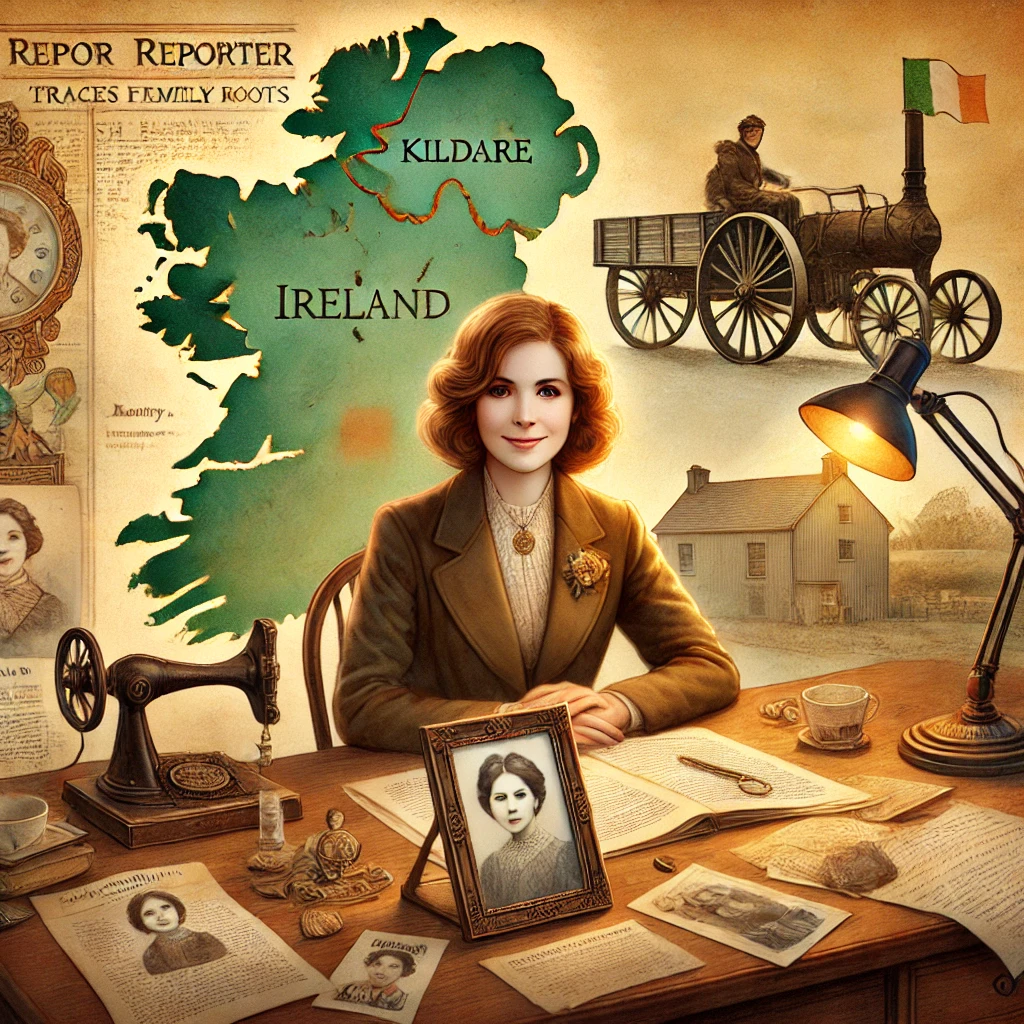Still a little Irish — just not as much as I thought.”
Every March, as Irish Heritage Month rolls in and shamrocks pop up on every other window, I find myself looking back. Not just at history books, but at my own family tree. I grew up thinking we were proudly Irish. The kind of Irish that said “Top o’ the mornin’ to ya” with conviction. But, as it turns out, the truth—like all good family stories—is a little more tangled.
My great-grandmother was the first of our Irish clan to be born on Canadian soil. Her mother—my second great-grandmother—Mary Patterson came from Connaught Bridge, County Kildare, Ireland. She made the journey as a young girl with her father, Thomas, and her sister Jane. But her mother, Mary Leighton Patterson, never made it. She died at just 31, before the family left—or possibly during the crossing. That part’s still a mystery.
According to family lore passed down from my father’s cousin, Penn Kemp—a poet in London, Ontario—Thomas and his daughters made the journey from Port Stanley to a farm in Adelaide Township, near Strathroy, by ox cart. Imagine that: two little girls, nine and seven, bumping across a raw new country behind a pair of oxen.
What stuck with me from Penn’s story was Thomas’s pride. He was proud they didn’t travel “by steerage.” I didn’t understand what that meant as a kid, or why no one ever talked about Mary’s death—but now I know: steerage was the crowded, often unsanitary lower deck where poorer immigrants were packed during the Atlantic crossing. Those ships earned the grim nickname “coffin ships” for a reason.
Thomas never remarried. Never had more children. Maybe he didn’t have the heart.
There’s more digging to do—many branches left to climb in my family tree—but I know my second great-grandmother Mary was born in 1846, just before the worst year of the Irish Potato Famine, remembered as Black ’47. Over a million people died. Another million fled. That’s not just a history fact—that’s the context of my family’s entire migration.
Mary’s grandfather, John Patterson, died in County Mayo in 1851. His wife, Elizabeth, lived on, eventually arriving in Ontario and passing away at the impressive age of 93. She had ten children in Ireland and likely helped raise Mary and Jane after they arrived in Canada. I can’t help but wonder what she lived through—and what she chose never to speak about.
Elizabeth is the furthest back I’ve been able to trace—my fourth-great-grandmother. She stands like a faint silhouette at the edge of our family story.
And then there are the surprise connections.
Mary’s sister Jane Patterson married William Garner Curry, and their son became none other than Sir Arthur Currie, the famed Canadian general in World War I. According to my grandmother, Jean Laurie (Bowley) Struthers, we had an antique chair “sat on by a famous general.” Turns out that wasn’t just a charming family myth. Sir Arthur was, in fact, a Patterson too.
Mary Patterson married William Patterson Morgan and passed down the Irish language itself. She taught her daughter, Eva Bertha Maud (Morgan) Bowley, who taught my grandmother, who—every St. Patrick’s Day—would speak Gaelic to me, even though I never learned it properly. She’d plan crafts, nature walks, and say things like “Top of the mornin’ to ya” without a hint of irony.
So yes, I’m still Irish. Maybe not in the way I thought—but in the way that matters.
Irishness, it turns out, isn’t just about surnames or green t-shirts. It’s about resilience. About crossing oceans. About ox carts, loss, language, legacy—and discovering how far someone will go to protect their children, their memory, and their pride.
And it’s about looking back—every March—with a little more clarity and a whole lot of gratitude.
